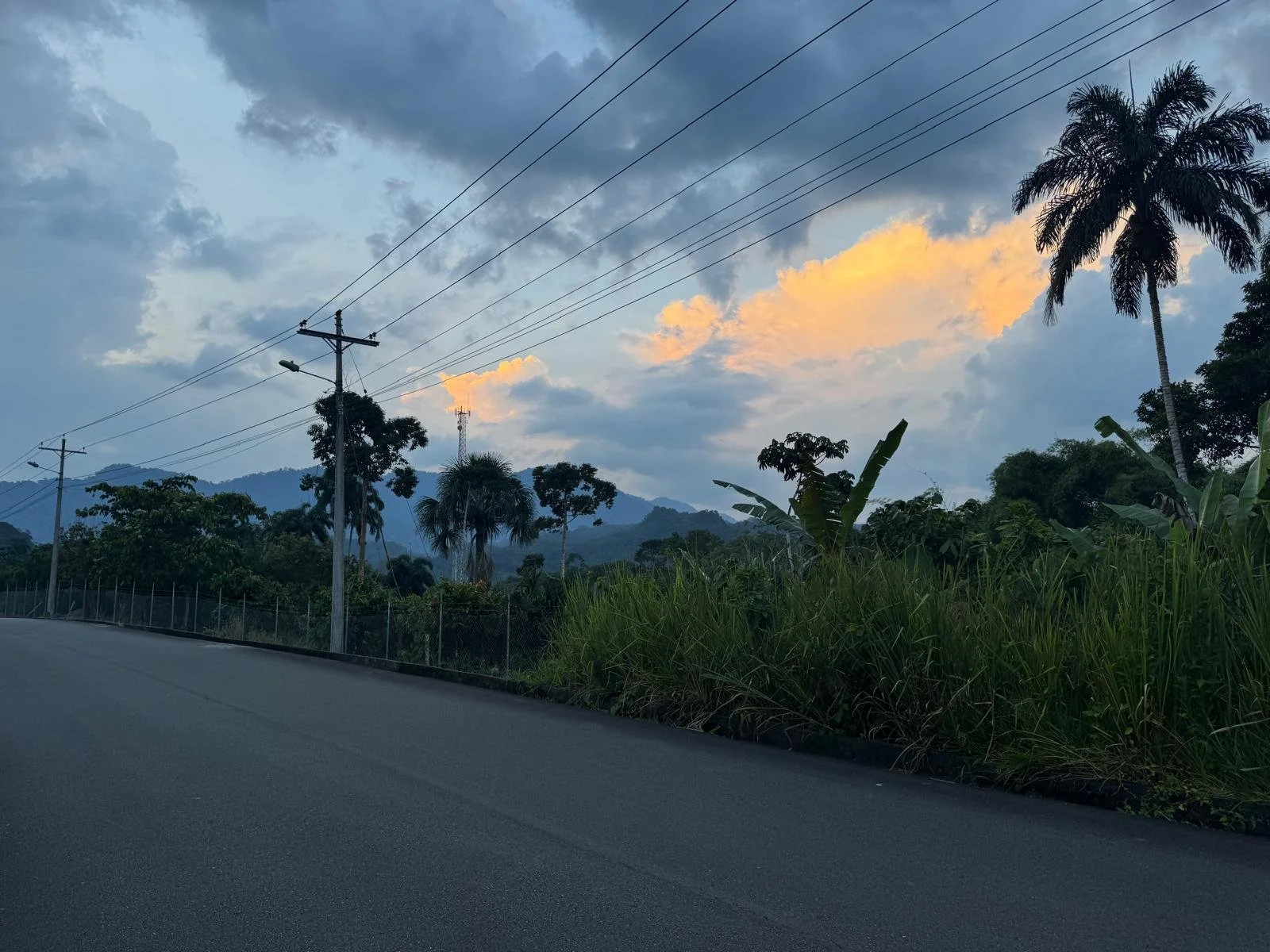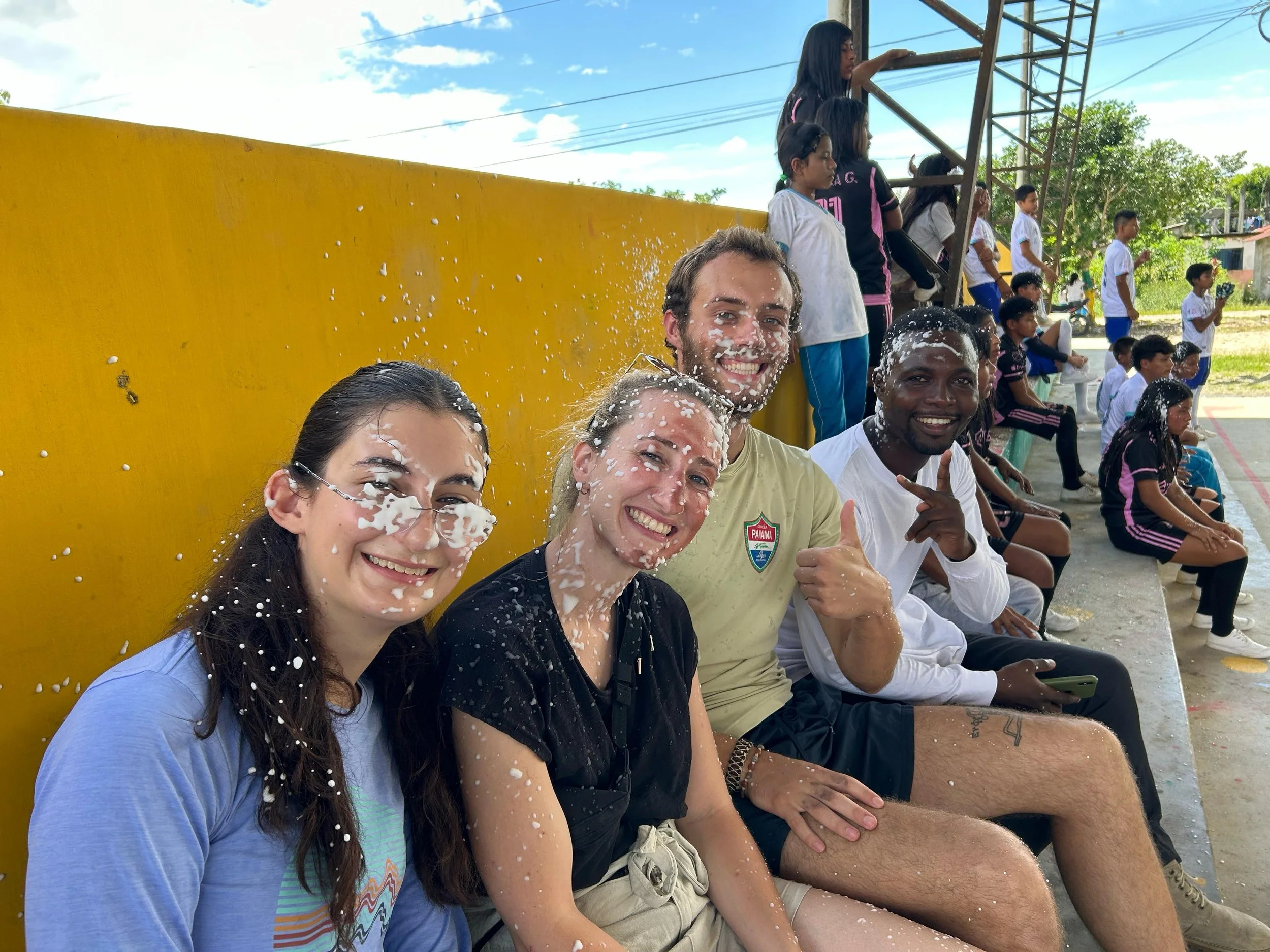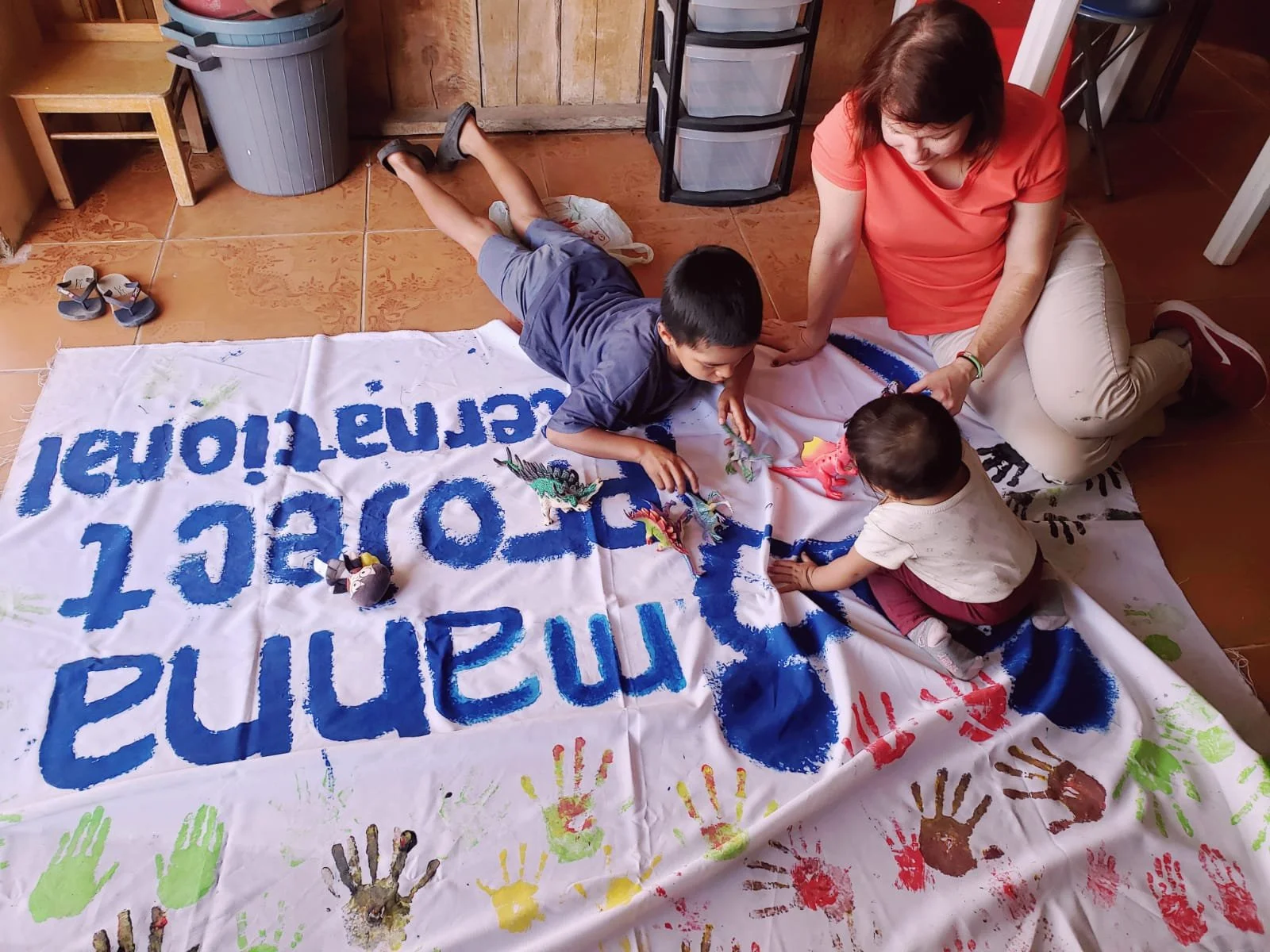By: Gabe Nichols, Carleton Extern ‘24
Over the past two weeks that I’ve spent here in the community of Shandia, I’ve learned so much and become more conscious of specific aspects of life that are both common and uncommon to my past experiences living in the United States. I came to volunteer for Manna Project International as a youth development extern and almost immediately encountered challenges that have helped shape my awareness of the problems people face in Ecuador and worldwide. Importantly, while being here I have also encountered many positive aspects present in the community of Shandia which are desperately needed elsewhere and should be followed.
As a youth development extern, my role involved working with the children in Shandia and also originally involved shadowing the youth development program director as he worked in the local school. However, for most of my first week in the community, the students were taking exams so I was unable to sit in on their English classes. While disappointing, I didn’t think this would be a problem because classes would resume the following week. However, as my first week in the community was coming to an end, organized protests broke out within the province over plans to build a maximum security prison in the town of Archidona near Tena. As a result, travel within the region, even between Tena and Shandia became extremely difficult because of man-made roadblocks that had been formed in protest of these plans. Owing to this, school was canceled and did not resume the following week because teachers were unable to travel to work and people across various industries had chosen to go on strike.
I had hoped to be able to witness the process of teaching English at the school in Shandia, yet these unforeseen circumstances weren’t completely negative. These events helped strengthen views I already possessed before coming to Ecuador and led me to realizations that I hadn’t previously reached. As a political science major, the events surrounding the protests against the planned prison construction in Archidona have been fascinating to me, and I was extremely impressed by the rapid coordination it must have taken to organize all of the people who took part in the protests around in the province and created roadblocks in such a short amount of time. Mobilizing the various groups involved in this political action only a few days after possessing widespread knowledge of these plans would have been no small undertaking. Especially after coming to the community of Shandia, I realized the importance of community and the friendliness present within indigenous Kichwa culture. When passing on a street, meeting in a home, or just going about one’s day in the community everyone’s presence is acknowledged, and it is expected that you shake hands and greet anyone you cross paths with. This consciousness of the importance of community and the accompanying close social bonds that come with it I’m certain had to have played a large part in the successful mobilization seen within the protests here.
While it remains unseen if the protests will be successful in preventing this construction, seeing the lived experience of people here has firmly made me believe that the emphasis on community and the acknowledgment of all within a community occurring in Shandia are cultural practices that should be adopted elsewhere and are badly needed in the United States. In my view, these seem to be actions almost essential for greater human flourishing to exist in the world. These recent events have also made me continue to recognize the importance of realizing an education that is accessible to all, as well as the challenges to this realization. Particularly in rural areas in Ecuador and the world, accessing education can become very difficult since the resources present in more isolated areas are slim. Additionally, in rural areas like Shandia, some teachers do not live directly in the community. When it is difficult to travel to an area where one teaches (such is the case with the roadblocks) the educational access of an entire community is diminished. Living in Shandia during this school cancellation has made me better understand the challenges children face in accessing education in rural areas especially due to their remoteness. While these events sound like a mixed bag, they have also made me better appreciate the work Manna Project does for children in the community through after-school programs such as the art program. Despite the cancellation of school, children were able to receive free educational lessons through this program while also being able to express themselves creatively.
I’ve found no easy way to sum up my experience externing for Manna Project that fully captures everything that I’ve learned from living here in Shandia (which explains why I’m kinda rambling in this blog post), but I do have a few key takeaways. Over the past two weeks, I’ve encountered cultural practices that I believe to be essential for people to live harmoniously and with dignity, I’ve grown to better understand struggles related to education accessibility and I’ve been afforded the opportunity to see the important work Manna does for the children of Shandia. Externing here instead of going to some dusty office in the United States is not something I will easily forget and I am very grateful I was privileged enough to come and learn from Manna Project International and the community of Shandia.





